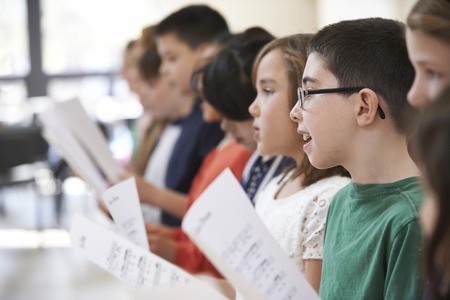 Most of the students who come to us are interested only in singing popular music – which is often sadly limited to what they are exposed to on the radio and T.V. This is totally understandable. I remember starting voice lessons as a young teen and being very disappointed that my teacher had no idea how to help me sing like Karen Carpenter (in my chest voice). She had me singing songs that I didn’t relate to.
Most of the students who come to us are interested only in singing popular music – which is often sadly limited to what they are exposed to on the radio and T.V. This is totally understandable. I remember starting voice lessons as a young teen and being very disappointed that my teacher had no idea how to help me sing like Karen Carpenter (in my chest voice). She had me singing songs that I didn’t relate to.
This approach did not help to further my dream of being a rock star, but since she was the only teacher I knew of at the time (before I met Seth Riggs), I struggled on for a couple of years, riding my bike five miles to her house and paying for my lessons with an after school job.
When I began teaching I vowed I would do my utmost to help my students sing the style of music they were interested in.
However, in spite of my unthrilling beginning with classical music, I would like to make a case here for including some of the Italian Art Song classical literature along with the country, musical theatre and pop repertoire that students are often exclusively exposed to these days.
I strongly believe that we have a responsibility to expose singers to all genres of music and to instill in them an appreciation for music that may be unfamiliar. I have also found that, while there are plenty of artists and songs that exemplify the “pushing/pulling chest” approach to singing, there are not that many songs out there that beginning students can sing (at least in the original key) without being tempted to “push/pull chest”.
Additionally, since many schools are eliminating music instruction from the school day, many young singers are simply never exposed to music that requires upper register singing. While mix singing teachers vocalize students throughout both registers, beginning students often have little opportunity to actually sing songs using their upper register. The artists who do sing in an upper register mix in pop music often record material that is dauntingly difficult for beginning singers because of its’ high-intensity, volume, and fast runs. Many teachers can perhaps relate to suffering through hearing a beginner attempting to sing “Hero” while rationalizing “the runs might be totally out of tune, but at last they are singing in mix!”.
I have found that teaching mix and avoiding unhealthy singing becomes much easier when I include the Italian Art Song Repertoire for many of my students, including children, female chest pullers and even male chest pullers.
The only vocal category that I would not use this approach for is the “Light Lower” group comprised mostly of ex-chorus and classical singers seeking to develop a more contemporary sound. Including the art song repertoire teaches singers how to function in the upper register and develops the CT dominant coordination while singing beautiful material that in most cases is not overly challenging, but which does encourage good singing.
Italian, in particular, is a language comprised of vowels that encourage good vocalization.
The legato approach required in this kind of singing enhances all other styles of singing. Parents are often thrilled to hear their progeny singing in a foreign language, and singers of all ages respond to the beauty of these art songs.
What prevents mix teachers from including this repertoire in their approach?
- They have not studied the literature in their own voice lessons and are therefore uncomfortable demonstrating this style of singing; the teacher may not have a personal affinity for classical singing.
- They are unfamiliar with the language and don’t feel they can pronounce the words correctly.
- They can’t read music and cannot play the piano accompaniments.
- They don’t think their students will like it.
- They don’t think popular artists today sing like this.
Here are some (hopefully helpful) ways to address each of these concerns:
Teacher Unfamiliarity
To familiarize yourself with this style, buy the 26 Italian Art Songs and Arias book (Alfred Publishing). Next, go to You Tube and listen to artists such as Renee Flemming, Cecilia Bartoli, Luciano Pavarotti, and Andrea Bocelli sing these pieces. Even if you don’t understand the lyrics, you will be moved by the beauty of the singing. Consider branching out in your own private vocal study by working with a classical teacher on this repertoire. Your own singing will benefit tremendously!
Pronunciation
Ever hear of IPA? This is yet another reason to familiarize yourself with the International Phonetic Alphabet, or IPA. The 26 Italian Art Songs and Arias book has pronunciations written in IPA. You just need to understand the sound associated with each symbol.
Accompaniment
For those of us (myself included) who cannot play classical music particularly well the Alfred version of the 26 Italian Art Songs and Arias comes with an accompaniment CD. You can also find most of the accompaniments online on YouTube.
Student Unfamiliarity
Most people don’t automatically love the unfamiliar. Classical music, like many things, has to be experienced. Learning to sing classical music often engenders a life-long love of this repertoire. You don’t have to want a career in classical singing to enjoy the benefits of studying it! I feel our duty as teachers is to expose our students to as many genres and styles of singing as possible, particularly since, in my opinion, what is being heard in media today is musically woeful (nursery rhyme melodies, entire songs built on one chord, repetitious and boring, boring, boring!)
Popularity
There are a few popular artists that have released recordings of classical repertoire. Michael Bolton and Aretha Franklin recorded the ever-popular “Nessun Dorma” from Giacomo Puccini’s frequently performed opera Turandot. Some Opera purists find this cringe-worthy- particularly Aretha’s version, since the lyric is about a prince expressing his triumphant assurance that he will win the princess Turandot. However, while Aretha might have had no idea what the words were about, many of her fans loved the fact that she sang this aria at the Grammys nonetheless. AND, she was a last-minute substitute- filling in for Luciano Pavarotti’s last-minute cancellation due to illness, with only 20 minutes’ notice. Quite a feat! Josh Grobin and Andrea Bocelli have also helped to popularize classical singing to the masses. Il Volo (“the flight” in Italian) is a trio of Italian pop-opera singers who are both handsome and hip. Exposing students to young classical singers will help convince them that this kind of singing is cool, too.
Exposing our students to this literature, along with their current favorites, will broaden their horizons and make them more well-rounded artists.
I have started teaching these treasures even to my very young children, with great results. Eventually they easily and authentically sing both pop and classical styles.
We used to hear that “if you can sing Opera, you can sing anything”. I don’t think this is necessarily true- you need a highly tuned musical ear to understand the style nuances of whatever musical genre you choose. Opera has its’ intrinsic “language” and pop does too- and they are often quite different.
However, the development of technical skills such as legato, correct vowel placement, transition through the primo pasaggio, balanced registration, dynamics, and flexibility, along with the muscular coordination and registration balance that result from studying the Italian Art Song literature will benefit students (particularly the chest pusher/pullers) of all musical preferences.
And who knows? You might end up nurturing the next Luciano!


